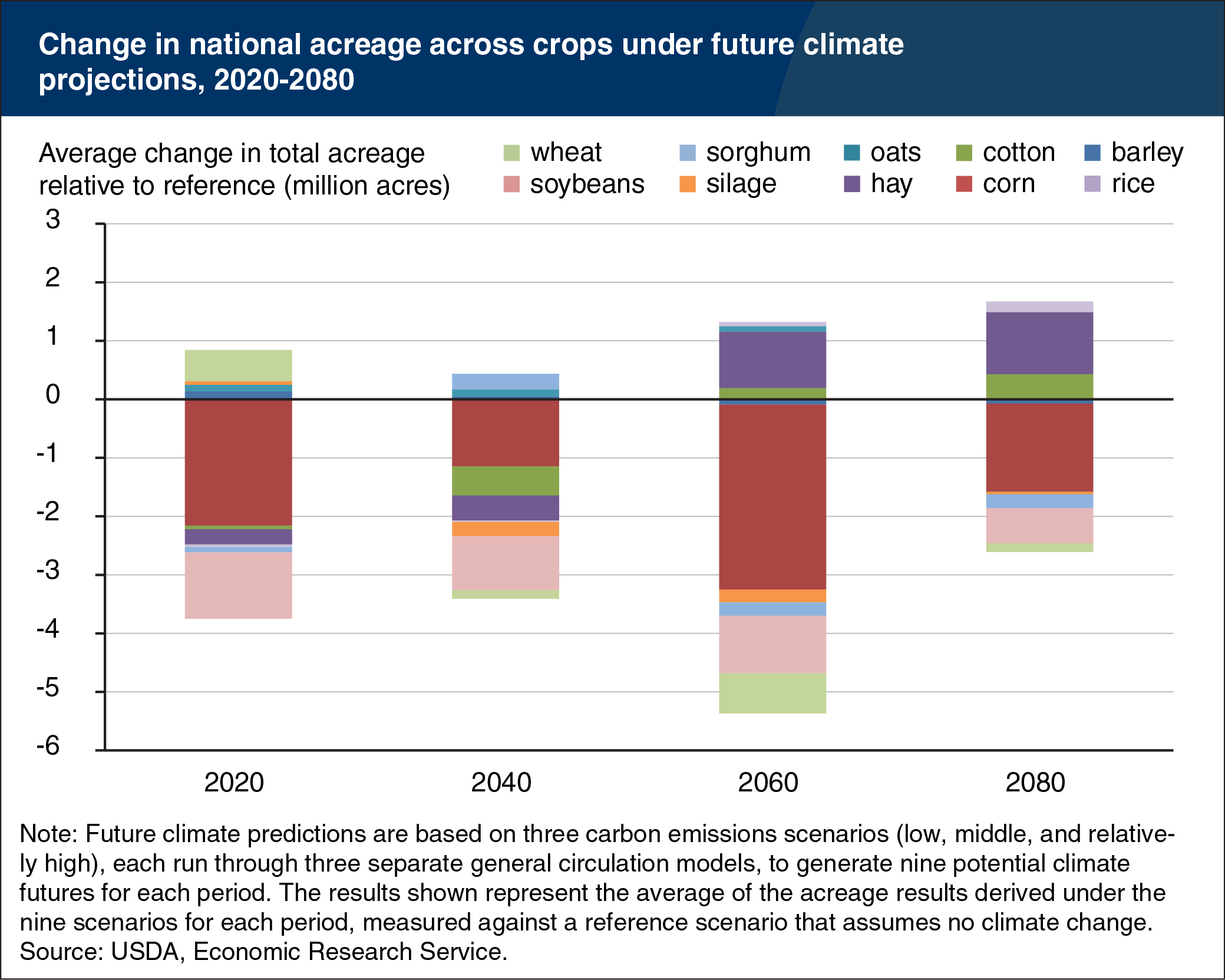Climate change is projected to cause declines and shifts in fieldcrop acreage across the United States
- by Elizabeth Marshall and Marcel Aillery
- 2/17/2016

ERS research projects that climate change will result in a decline in national fieldcrop acreage over analysis years 2020, 2040, 2060, and 2080, when measured relative to a scenario that assumes continuation of reference climate conditions (precipitation and temperature patterns averaged over 2001-08). Acreage trends are explored for nine climate change scenarios, and substantial variability exists across climate change scenarios and crop sectors. When averaged over all climate scenarios, U.S. acreage in rice, hay, and cotton is projected to expand, while acreage in corn, soybeans, sorghum, wheat, and silage declines. Acreage response varies across crops as a function of the sensitivity of crop yields to changes in precipitation, temperature, and atmospheric carbon dioxide; the resulting changes in relative crop profitability; the coincidence of climatic shifts with geographic patterns of crop production; and variables related to the extent of crop reliance on irrigation. This chart is from the ERS report Climate Change, Water Scarcity, and Adaptation in the U.S. Fieldcrop Sector, November 2015.

